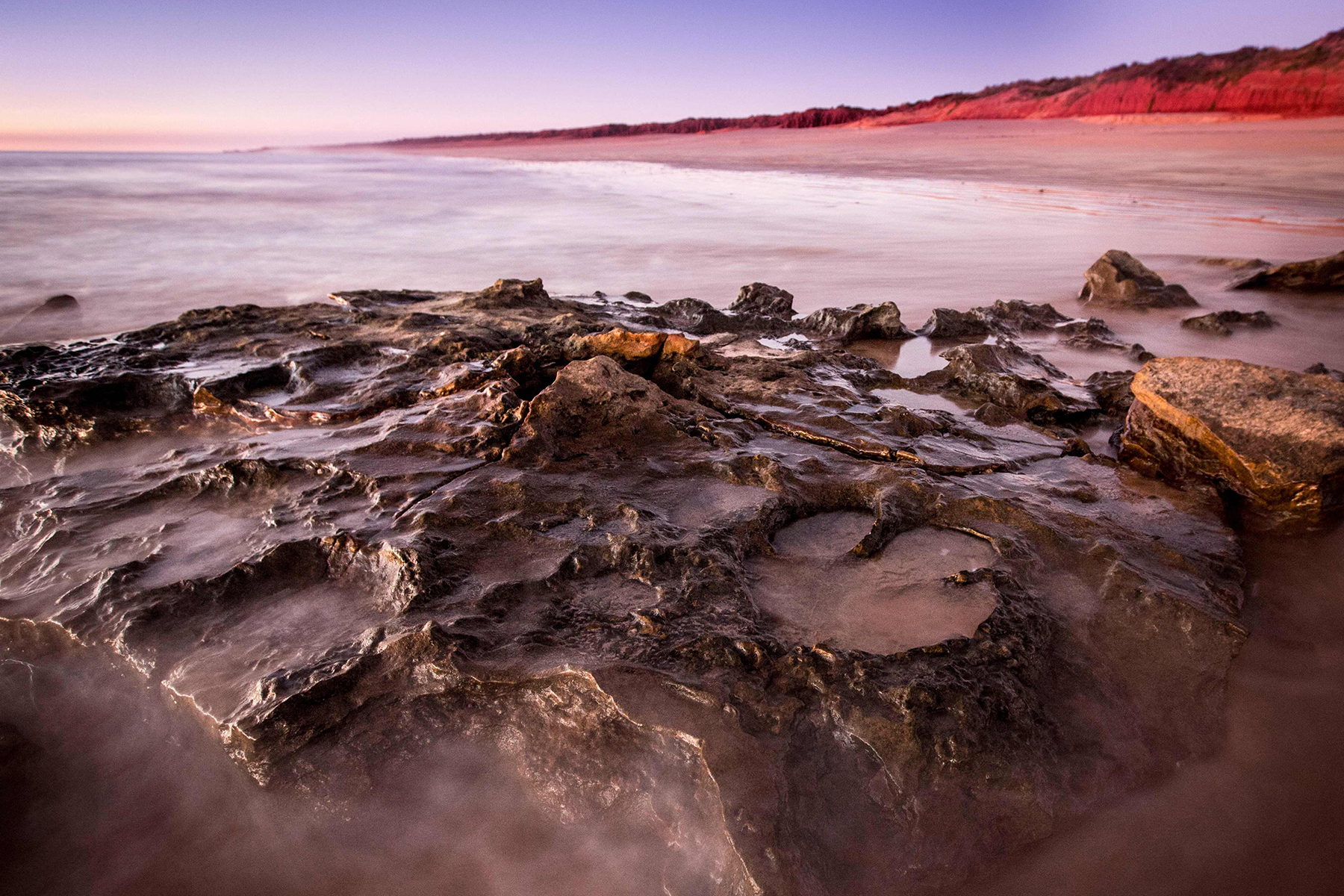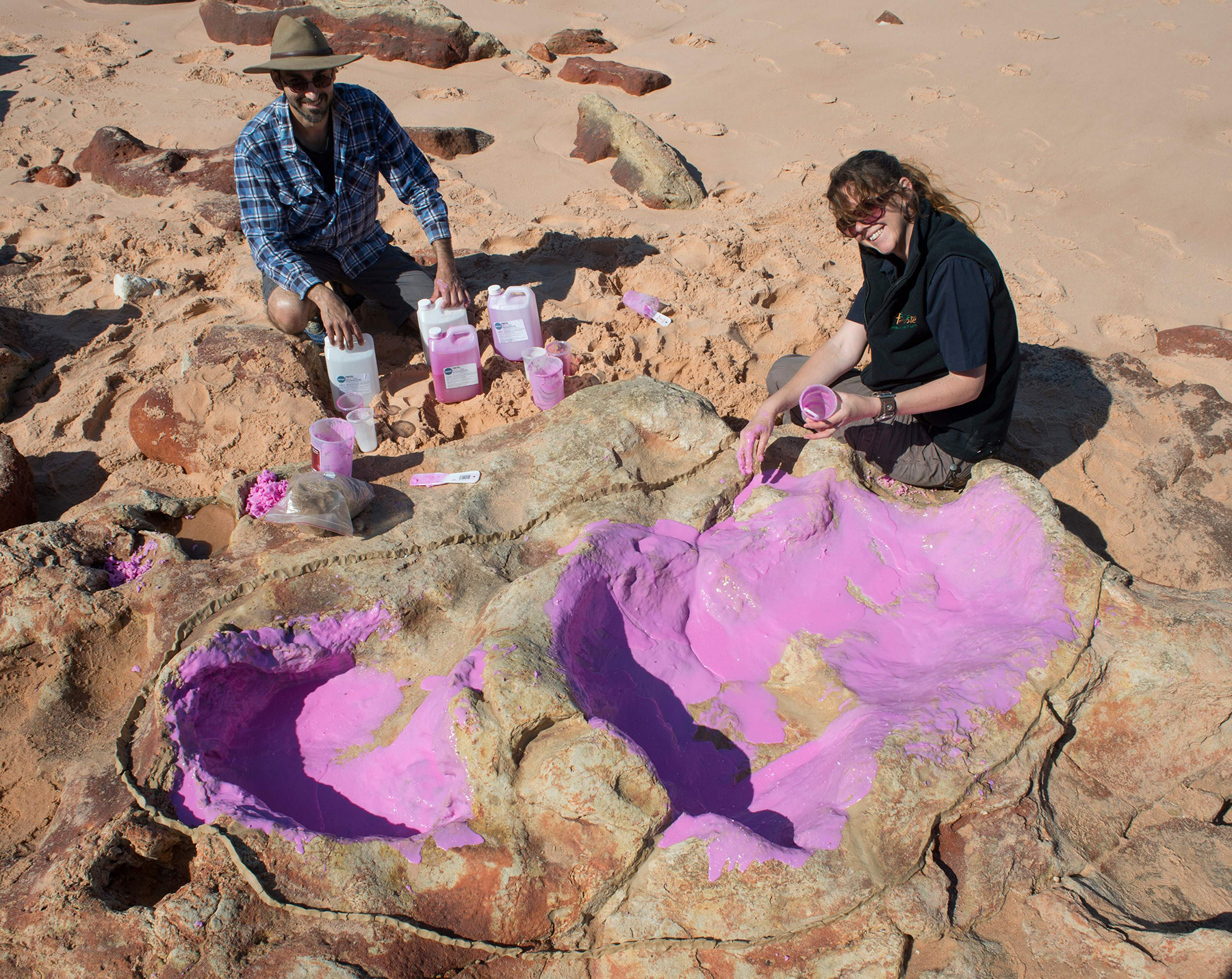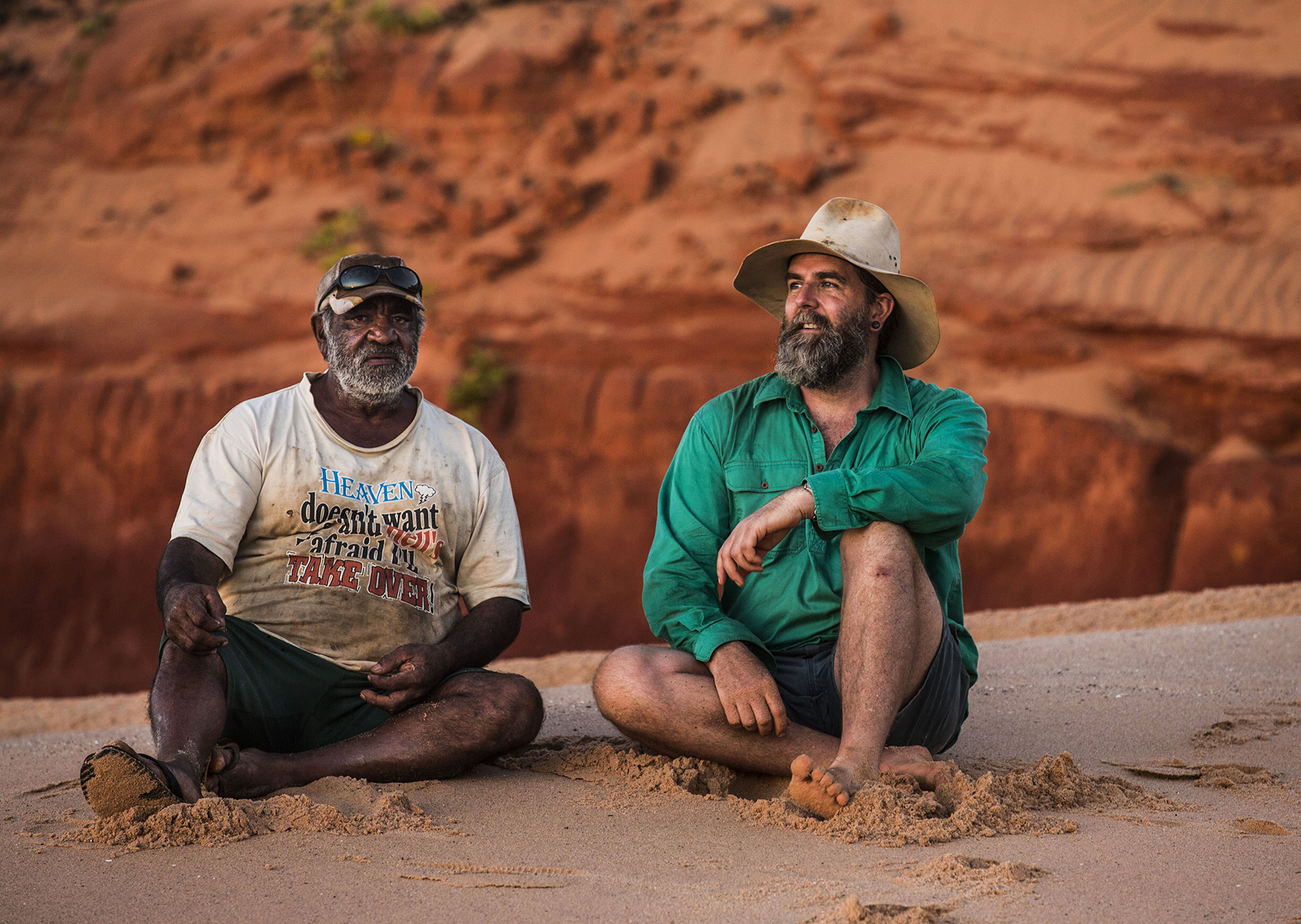Massive dinosaur tracks identified in 'Australia's own Jurassic Park'
21 types of dinosaur tracks were identified on one stretch of land.
— -- A group of scientists is claiming to have found the largest-ever known dinosaur footprint, in a region nicknamed Australia's Jurassic Park, and the images are staggering.
The team of paleontologists, hailing from the University of Queensland in Brisbane, Australia, report that an "unprecedented 21 different types of dinosaur tracks have been identified on a 25-kilometer stretch of the Dampier Peninsula coastline."
According to the university, its scientists braved sharks, crocodiles and massive tides in order to unveil dinosaur tracks embedded in rocks that they say are 127 million to 140 million years old in the remote Kimberley region of Western Australia.
Their findings were published in The Society of Vertebrate Paleontology, and that study's lead author, Steve Salisbury, likened the finding to a real-life version of the the Steven Spielberg blockbuster in a press release issued by the university.
"It is extremely significant, forming the primary record of nonavian dinosaurs in the western half the continent and providing the only glimpse of Australia's dinosaur fauna during the first half of the early Cretaceous Period," Salisbury said of the scientists' findings.



"It's such a magical place — Australia's own Jurassic Park, in a spectacular wilderness setting," he added.
While it might be too much of a trek for most Americans to visit, the school has released images and video of the tracks for everyone to see.
Simply put, they are huge: One image shows a man lying next to a footprint, and it could fit his entire body.
Also, the landscape surrounding the prints appears barren and serene. The region where the tracks were found is sparsely populated and inhabited primarily by the Goolarabooloo tribe, which collaborated with the scientists in this expedition, according to the university.
Salisbury described the prints as diverse.
"There were five different types of predatory dinosaur tracks, at least six types of tracks from long-necked herbivorous sauropods, four types of tracks from two-legged herbivorous ornithopods and six types of tracks from armored dinosaurs," he said.
Among the tracks, Salisbury noted, is the only confirmed evidence of stegosaurus in Australia.